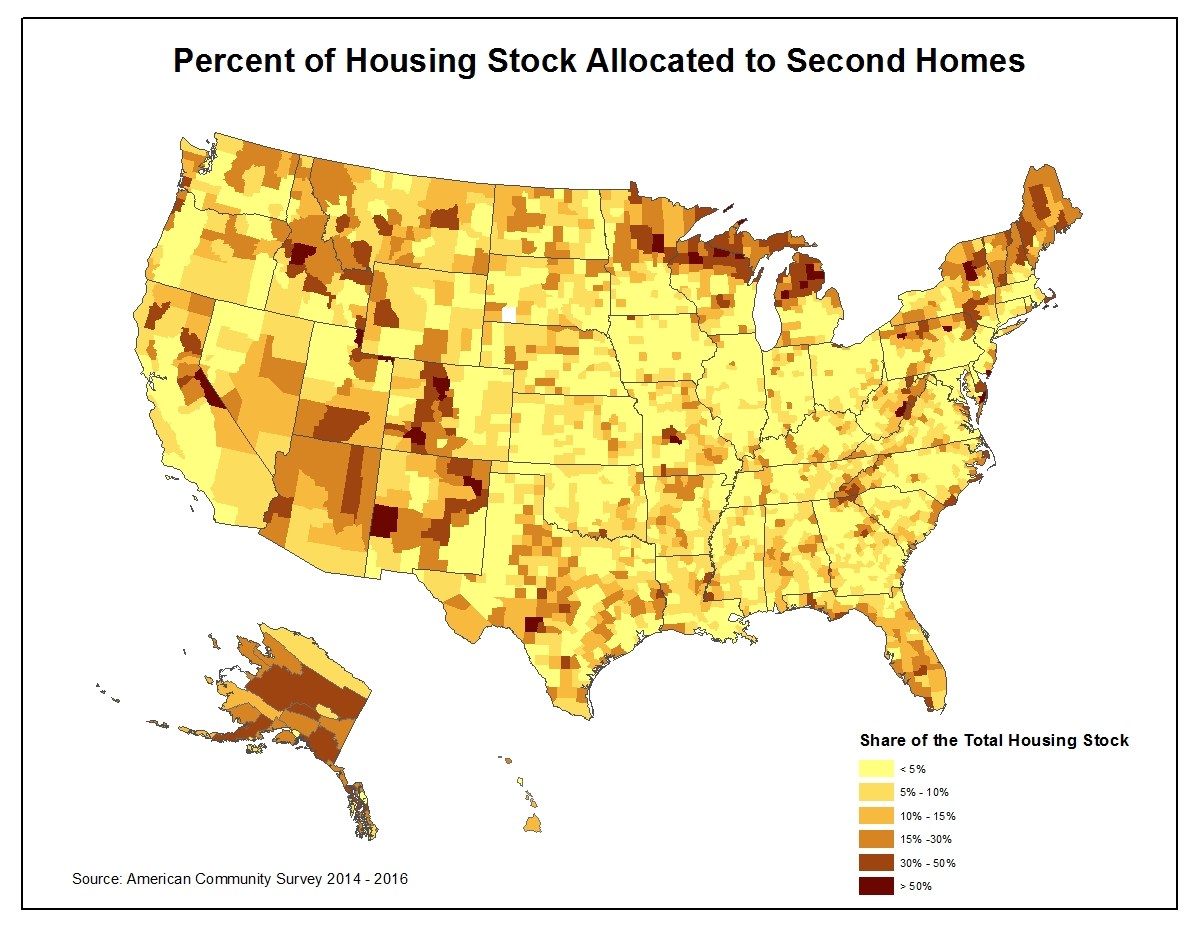The stereotype of a second home usually involves a tropical beach, a boat dock on a lake, or skiers whizzing past a picture window, but the National Association of Home Builders (NAHB) says that is not reality. Or at least not all of it. Na Zhao, writing in NAHB's Eye on Housing blog says there are a good amount of second homes and lots exist in non-vacation-y areas.
NAHB estimates there are 7.4 million homes, or 5.6 percent of the total housing stock that qualify for the second home mortgage tax deduction. That information comes from the Census Bureau's 2016 American Community Survey (ACS.)
As might be expected, the state with the largest stock of second homes was Florida with 1.1 million; 15 percent of all such homes in the country. Roughly half of the total is located in Florida and seven other states, California, New York, Texas, Michigan, North Carolina, Arizona, and Pennsylvania. But looking at the county level, NAHB found that these homes are not restricted to areas necessarily considered prime vacation spots.
There were 916 counties spread over 49 states, where second homes accounted for at least 10 percent of the local housing stock. Only Connecticut and Washington D.C. lacked such areas. In 12 percent or 353 of the country's counties, one-fifth or more of the housing stock were second homes and in 33 counties that share was over 50 percent. Those 33 counties were spread over 13 states; five in Michigan, four in Wisconsin, three in Colorado, two in both Massachusetts and New Mexico. There was one such county in California, Maryland, Minnesota, Missouri, New Jersey, Pennsylvania, Texas, and West Virginia. These national patterns are mapped below.

Population density has a lot to do with the distribution. Counties with more than 25,000 second homes are mostly located in or near metropolitan areas. The top 10 counties were Maricopa, Arizona (number 1), Florida's Palm Beach, Broward, Lee, Penelles, Collier, and Miami-Dade; Riverside, California; Barnstable, Massachusetts; and Suffolk, New York.







